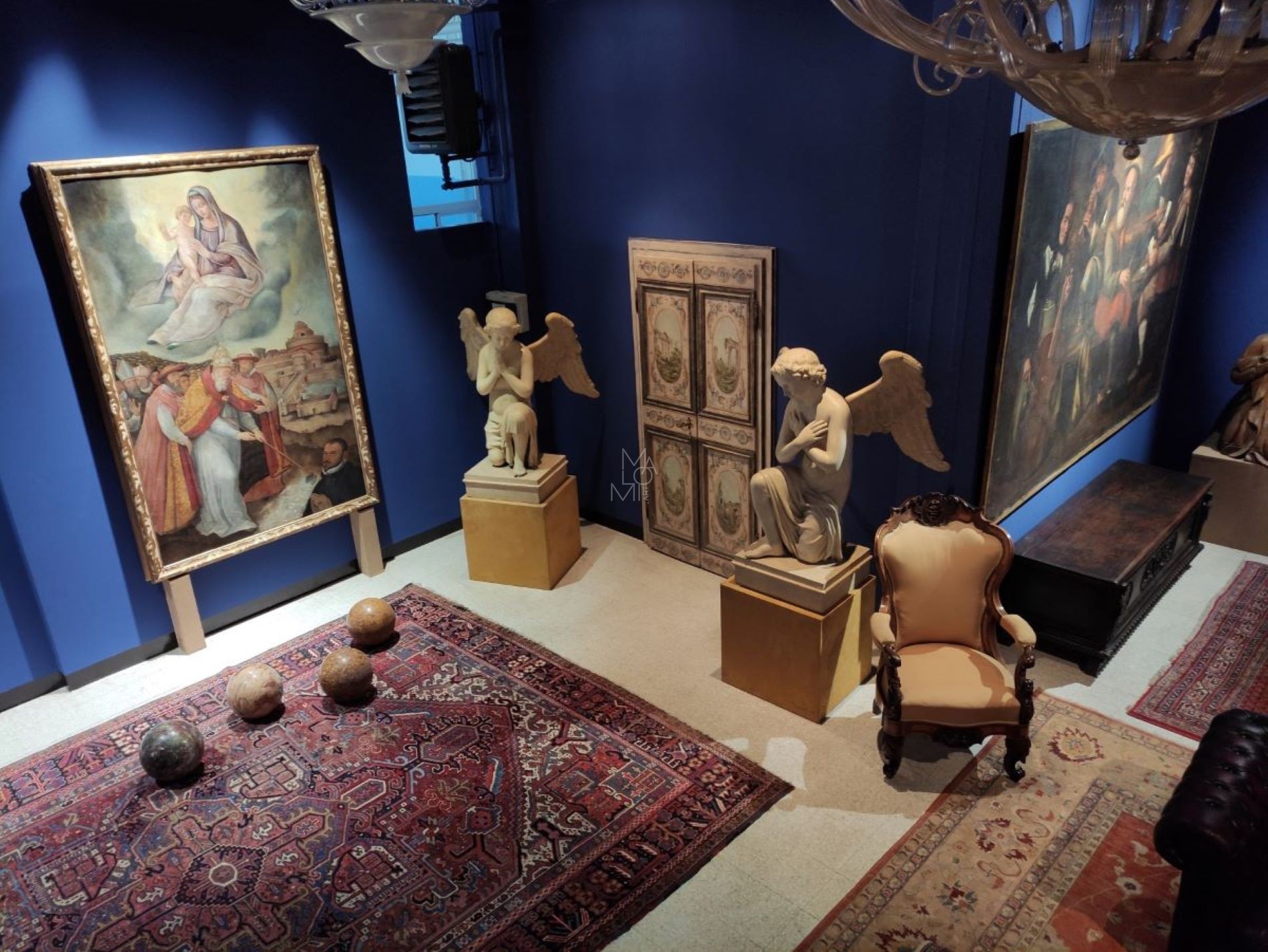The blinding of Samson
This magnificent Tapestry depicts an episode from the story of Samson, the unfortunate biblical hero whose story is told in the Book of Judges in chapters 13; 14; 15; 16.
The second tapestry depicts the tragic consequences of his love for Delilah. The woman, with whom Samson has unwisely fallen in love, is bought by the Philistines in order to steal the secret of his strength. At first deceived by Samson, she binds him in various ways while he sleeps, but Samson always frees himself without difficulty; finally Samson, bored by Delilah's constant questions, confides to her that the secret of his strength lies in his hair, which has never been cut because of the vow of nativism made by his parents at his birth. So Delilah, while Samson sleeps, cuts off his hair and delivers him to the Philistines, who blind him and put him in chains to turn the wheel in Gaza.
The author of the tapestry cartoon was probably inspired by Schelte Adamsz Bolswert's engraving taken from a painting by Peter Paul Rubens and published by Gillis Hendricx in Antwerp after 1645. The draughtsman who designed the tapestry expressed himself with considerable skill and professionalism. The border is instead treated as a theatrical decoration, an architecture in itself. The figurative scenes are set in the background, behind a columned proscenium, just as in Rubens' series of The Story of Achilles and The Triumph of the Eucharist.
The Blinding of Samson, formerly Durini Collection today Castello Sforzesco Milan Another core is in La Cervara, Abbazia di San Girolamo al Monte di Portofino, Liguria. All the tapestries in this series share the same architectural-type border: two twisted columns appear at the sides, embellished with floral motifs; festoons of flowers are arranged in the horizontal frames around a central one in which there is a cameo. Other tapestries from this group are known, those from the Polish Malbork Castle mentioned above. We believe that, despite the many differences between one series and the other, both our Viennese and Malbork tapestries come from the workshop of the Wauters brothers in Antwerp. In the correspondence of the Forchoudt trading house in Antwerp, a series of 8 pieces is mentioned in 1676: the Histoire de Samson (Samson's Story). As there was certainly an ongoing collaboration between the Forchoudt company and the workshop of Michael and Phillip Wauters, we can deduce that the tapestries in question were the work of one of the Wauters brothers, probably Philippe.
